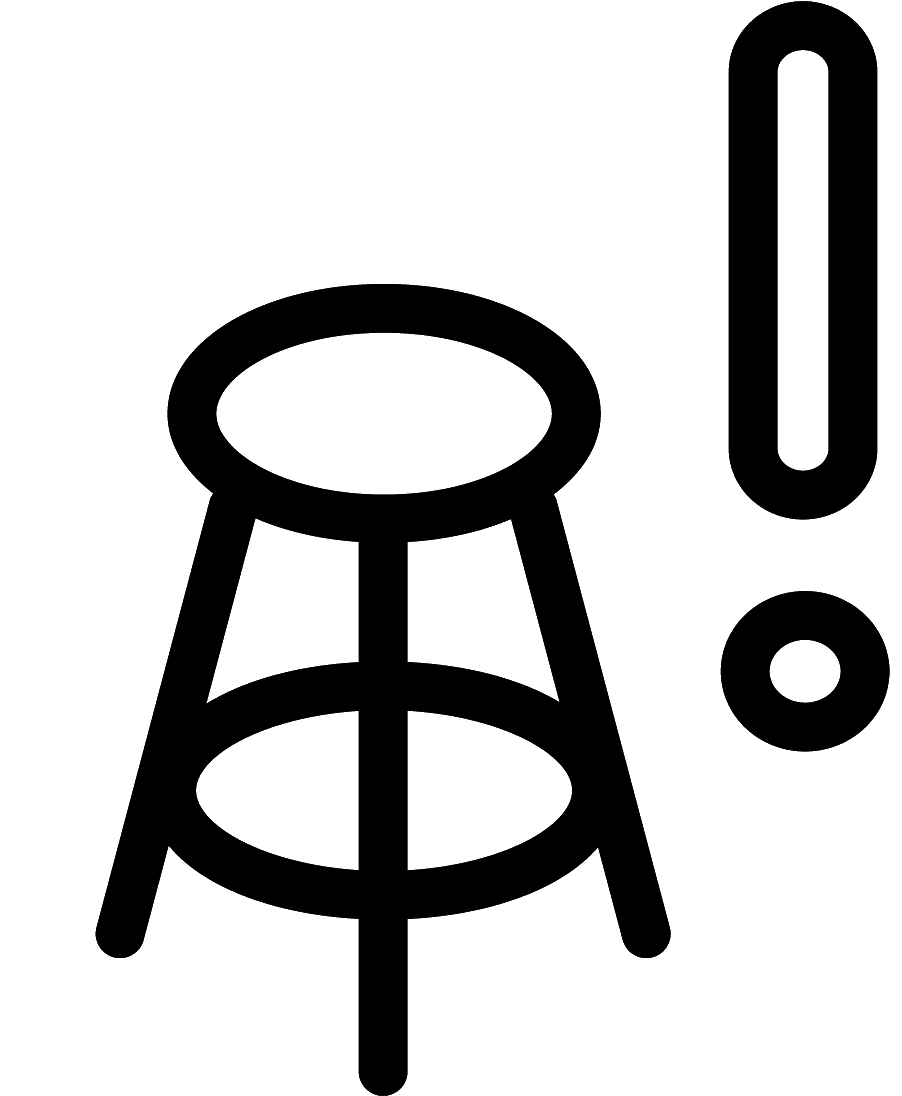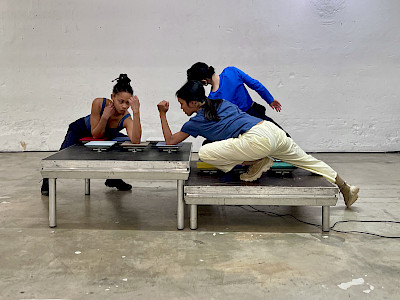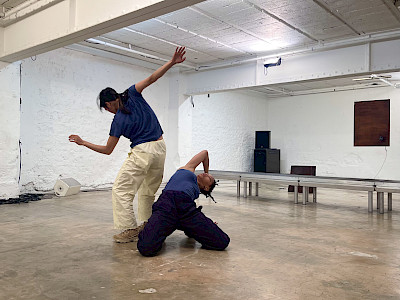21 — 23.05.2025
Tarek Atoui, Noé Soulier Angers-Paris
Organon
dance / visual arts — premiere
 | ⧖ 1h | €20 / €16 | Free roaming, standing event with limited seating
| ⧖ 1h | €20 / €16 | Free roaming, standing event with limited seating
A breeze seems to flow through the Horta Hall. Artist and composer Tarek Atoui is renowned for his meticulous yet free exploration of how sound makes materials vibrate. A central guest at the 2017 festival, his exhibition and concert series defined that year’s edition. His sculptures are newly imagined instruments that invite intuitive interaction, where our movement shapes sound, which in turn guides movement. Choreographer Noé Soulier, a highlight of the 2022 edition, deconstructs choreography into gestures and invisible relationships: rapid and intricate shifts that strike the audience with the immediacy of a wind gust.
Despite their differing approaches, Atoui and Soulier share a fascination with gesture and the movement of the invisible. True to its experimental mission, the festival invited the two artists to collaborate. Together, they create an indescribable, boundary-defying performance of sound and choreography, body and material, human and non-human. The space becomes a mesmerising forest of gestures where actions and reactions are continuously reconfigured. Or perhaps both are carried by the same invisible wind that flows between body, sculpture, and perhaps through us.
Interview with Tarek Atoui and Noé Soulier
Béatrice Lapadat – What was the origin of Organon, and how did the idea of working together come about?
Tarek Atoui – I met Noé about ten years ago, and since then we have kept up with each other’s work and careers. Our collaboration on the Organon project came about thanks to the invitation from Kunstenfestivaldesarts, well- known for its ability to build bridges between disciplines. When the festival issued us with the invitation, we had each already submitted one of our creations for previous events. For me, this proposal came at a time when I was very keen to broaden the range of my collaborative efforts, approaching artists working for the stage, and I knew at once that Noé was the ideal artist to support me in this venture.
Noé Soulier – After having seen several of Tarek’s performances and exhibitions, I really longed to do a stage project with him. However, we quickly saw that this process couldn’t work, since Tarek doesn’t create music for the stage as an illustration or accompaniment to movement. The invitation from the Kunstenfestivaldesarts therefore encouraged us to consider other ways of combining our existing work, starting with methods and gestures already developed, transforming them within a hybrid space, belonging to the world of the performance and to the installation at the same time.
What inspired your choice of title for the performance —Organon?
NS – Through this title, we were really seeking to highlight the etymological meaning of the term “organon”—“tool”, “instrument”—that is, an item which fulfils a purpose outside of itself, such as producing sound. In Tarek’s work, the “organon” is seen as not limited to the production of sound; it also has a meaning linked to the materiality, to the organic, in which the kinaesthetic, tactile and corporal dimensions are activated. In our perfor-
mance, neither dance nor sound are enclosed exclusively in a visual or sonic mode of perception. There is here a real co-dependency between these practices, every hierarchy is abolished.
TA – For me, the “organon” refers to a way of understanding or addressing an instrument, completely in line with our way of working, which aims to explore a sound object through precepts belonging to the body and to movement, as shaped by Noé’s choreographic writing. Exploration of the sound through the body, other than the strictly musical aspect, is at the heart of my interest in this collaboration, and the title reflects it correctly.
Could you tell us more about the various installations mobilised in Organon? What kinds of interaction do they allow between the body and the work?
NS – Tarek’s various installations present in Organon allow the various relationships among the body, the movement, the work and the sound to be explored. Some, such as the basins with drip-feeding systems, or the percussion with small motors, produce their sound independently. The relationship woven with these is close to that possible with the physical presence of a musician: synchronising with the rhythms they offer, responding to the way they occupy the space. Others function as instruments activated by the movements of the interpreters. We explore these actions, as much for the sounds they produce as for their visual and choreographic dimension. Finally, a device connects two
interpreters to an electrical circuit which produces sound as a function of the surface and the pressure from contact between the bodies. It thus allows a sound dimension to be
added to the tactile relationship between these two people. These three modes, the installation as protagonist, as instrument and as relationship, multiply the choreographic possibilities. They circumvent any binary opposition between body and object, purpose and means, sound and image.
TA – As for the Soft Cells, these consist of an instrument which first appeared in a project called Within, started in 2012, to explore the way in which deafness could change the understanding of the sound performance. The Soft Cells are fabric squares given a particular tactile identity, being sensitive to touch and pressure. Depending on the strength of the contact, when touched one hears a tape of sound data coming from recordings made by people who are deaf or hard of hearing. The squares can be arranged in multiple ways, thus creating a surface on which movement is deployed in an unexpected way. The Soft Cells respond to my attempt to explore the multiplicity of musical and sound forms that could emerge when sound and movement interact within a “synergy loop”, where it is no longer clear whether the sound induces the action, or the action induces the sound.
- Interview conducted by by Beatrice Lapadat in March 2025 for the Festival d’Automne in Paris.
- Translated by Joanna Waller.
Beatrice Lapadat is a researcher in stage arts, a cultural journalist, critic and educator.
Presentation: Kunstenfestivaldesarts, Bozar
Concept: Noé Soulier & Tarek Atoui | Dancers and artistic collaborators: Stephanie Amurao, Yumiko Funaya, Nangaline Gomis, Samuel Planas, Mélisande Tonolo, Gal Zusmanovitch | Assistant: Julie Charbonnier
Production: Cndc Angers | Coproduction: Kunstenfestivaldesarts, Studio Tarek Atoui, Festival d’Automne à Paris, Centre Pompidou
With the support of the Ammodo Foundation and Dance Reflections by Van Cleef & Arpels
Performances in Brussels with the support of the French Embassy in Belgium and the Institut français Paris as part of IF Incontournable




